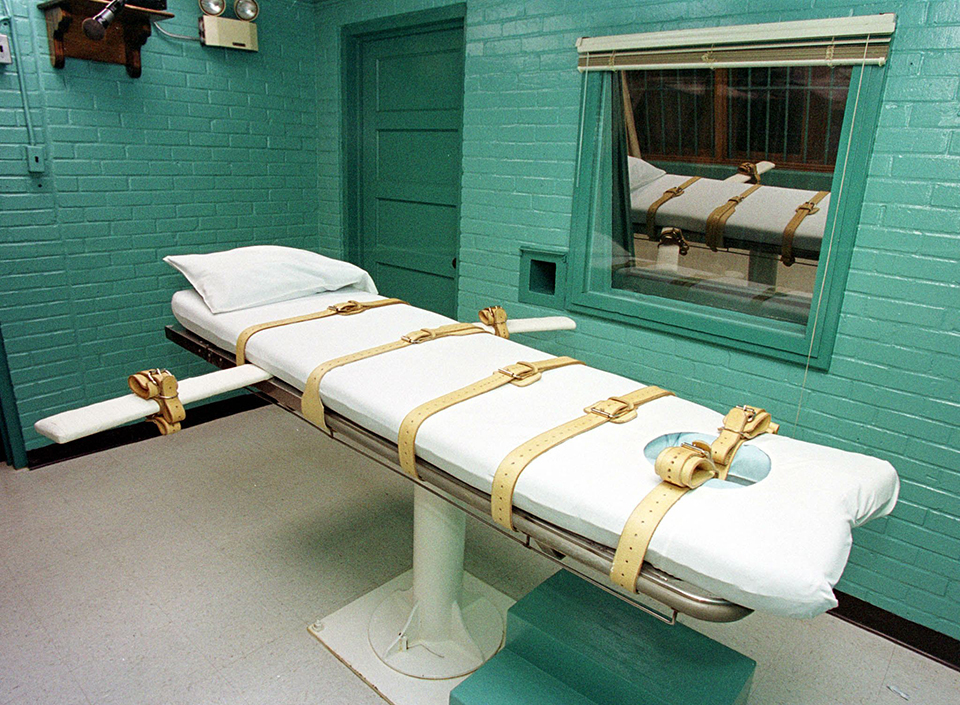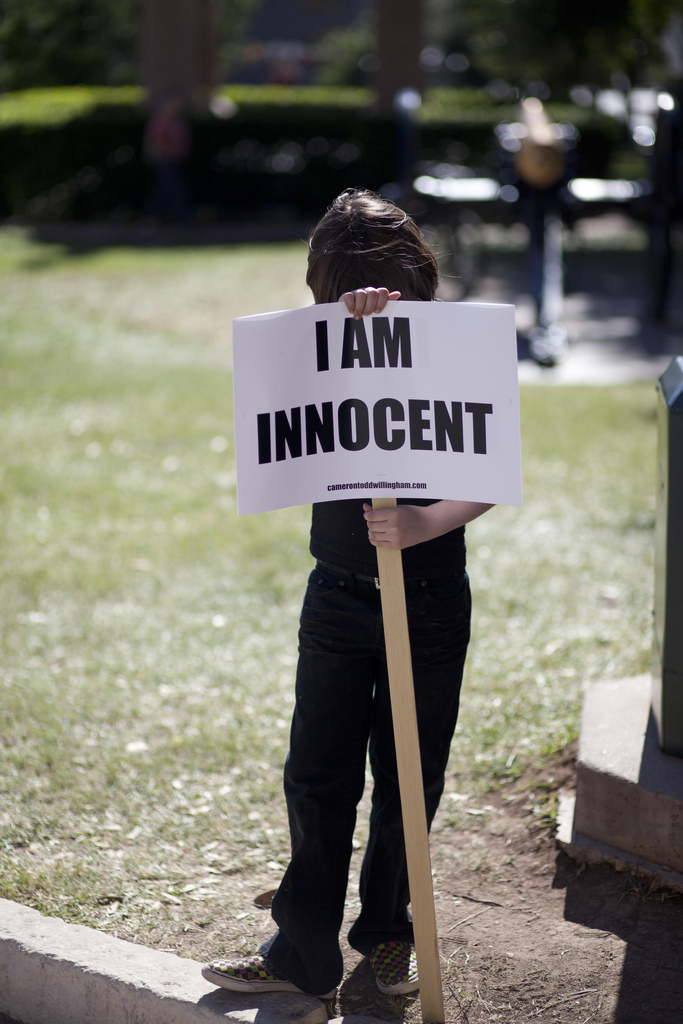The Corsicana Sun newspaper has published several letters in response to the Willingham case, and in particular responding to the guest column by former prosecutor John Jackson who illogically claimed that despite the flawed forensic evidence regarding arson, he thought Willingham was still guilty. All of the letters published so far are critical of Jackson and support the idea of Willingham’s innocence. If you would like to write the Corsicana Sun about the Willingham case, the email address is soundoff@corsicanadailysun.com
“If there was no arson, Todd Cameron Willingham didn’t get a fair trial because the State poisoned the minds of the jurors with “scientific” evidence that he deliberately set the fire. Rationalizing that Willingham was “charged as a multiple child murder, and not an arson-murder to achieve capital status” is a just a bunch of legal gobbeldegook that ignores the reality of the prejudicial impact caused by bogus scientific testimony. In the minds of the jurors, Willingham stood accused of setting the fire, regardless of the formal charge or the court’s instructions to the jury.
If you eliminate arson as a cause of the fire, Willingham’s guilty is not so clear-cut. For example, how could the refrigerator have been intended to block the escape from an unexpected fire. Moreover, the whispered statement, “You’re not the one who was supposed to die” is ambiguous. Willingham might have meant he wished he had died instead.
Willingham should have gotten a new trial without the testimony that the fire was arson. Then the other evidence against him would have been put to its proper test.”
— David
“Willingham guilt never in doubt has a serious problem: it offers no evidence of guilt. Remember, the evidence now revealed states that there was no arson. This trumps this entire article. It means that Willingham did not set the fire. Perhaps, he did not try to rescue his children but that was not why he was executed. He was executed for murder which is different from not rescuing the children. I would think Jackson would recognize this fact. Thus, this entire commentary is meaningless because it is based upon the fact that there was an arson. There wasn’t.”
— Brian
“No arson, no crime. No crime, no trial. No trial, no death penalty.”
— Claudio
“Mr. Jackson: The country’s leading fire experts have stated that under no circumstances was this an arson fire. Therefore, nothing else you say matters.”
— Charles
“I am not anti-death penalty. However, it is plain and simple to see that Todd Willingham was murdered by ineptitude and bureaucracy.”
— Michael
“This is in response to your guest column by John Jackson, writing in defense of his role in executing a man who it appears was clearly not guilty beyond a reasonable doubt.
Willingham was not a good man, he was an admitted wife-beater and petty criminal. However, that is still insufficient cause to kill someone by lethal injection, in contrast to Jackson’s apparent belief.
Perhaps denial is the only way the Jackson can still face himself in the mirror each morning. At least, I hope that it is denial, and not a willful distortion of the truth.
Two statements I find particularly troubling:
“6. Witness statements established that Willingham was overheard whispering to his deceased older daughter at the funeral home, “You’re not the one who was supposed to die.” (The origin of the fire occured in the infant twins bedroom) and;
7. Any escape or rescue route from the burning house was blocked by a refrigerator which had been pushed against the back door, requring any person attempting escape to run through the conflagration at the front of the house.”
For number 6, as a parent, I can easily imagine myself saying, “You’re not the one that was supposed to die (first)”… meaning a parent should not outlive his child. An overheard statement, taken out of context, does not make a man a killer. Neither does the implication offered by Jackson, as we can believe that the origin of the fire was in the twin’s bedroom only if we accept the premise stated in Hurst’s analysis that the fire was an accident. During the trial, it was offered that the fire was accelerated and of multiple origins.
For number 7, we can refer to the article in the New Yorker, quoting your own public servants:
“Even the refrigerator’s placement by the back door of the house turned out to be innocuous; there were two refrigerators in the cramped kitchen, and one of them was by the back door. Jimmie Hensley, the police detective, and Douglas Fogg, the assistant fire chief, both of whom investigated the fire, told me recently that they had never believed that the fridge was part of the arson plot. ‘It didn’t have nothing to do with the fire,” Fogg said.'”
— Gerald
“I’m a retired American soldier residing in South Korea. When I read the story about Todd Willingham being accused for killing his 3 daughter and then being executed after refusing to plead guilty, I was angry.
There’s no doubt in my moind, Todd Willingham didn’t killl his daughters. I believe, after Todd Willingham’s wife departed the home, Todd Willingham decided to take a nap. While he was sleeping, one of the girls put something in the space-heater and started a fire. The girls could have been catching paper on fire and accidently set the room on fire. When Todd Willingham woke up, he panicked. I’m a soldier who served over 6 years in combat. People tend to panic under dangerous situations. I bleive Todd Willingham made an effort to find the girls, but the smoke became too thick and he couldn’t see what he was doing. Moving the car to a safer area doesn’t mean he is guilty of murder. People tend to try and save anything during a fire. During a fire, shock sets in and things become hetic. I know, our home burned down one morning. My dad tried to get everyone out. He ended up jumping from an upstairs window, We all made it out of that burning hell.
“Todd Willingham was an innocent man who went through hell. He not only lost his daughters, he lost his wife and a future. Hid Mom and dad loved him. I can understand why his Mom and dad stood by him. I would walk through gunfire with a guy like Todd Willingham. In my opinion, Todd Willingham had courage. He done the right thing by not admittng to a crime he didn’t do. Todd Willingham had no fear of being executed because he was an honest man who had courage. I admire a man with courage. God bless Todd Willingham.”
— R.D., U.S. Army (Retired)











